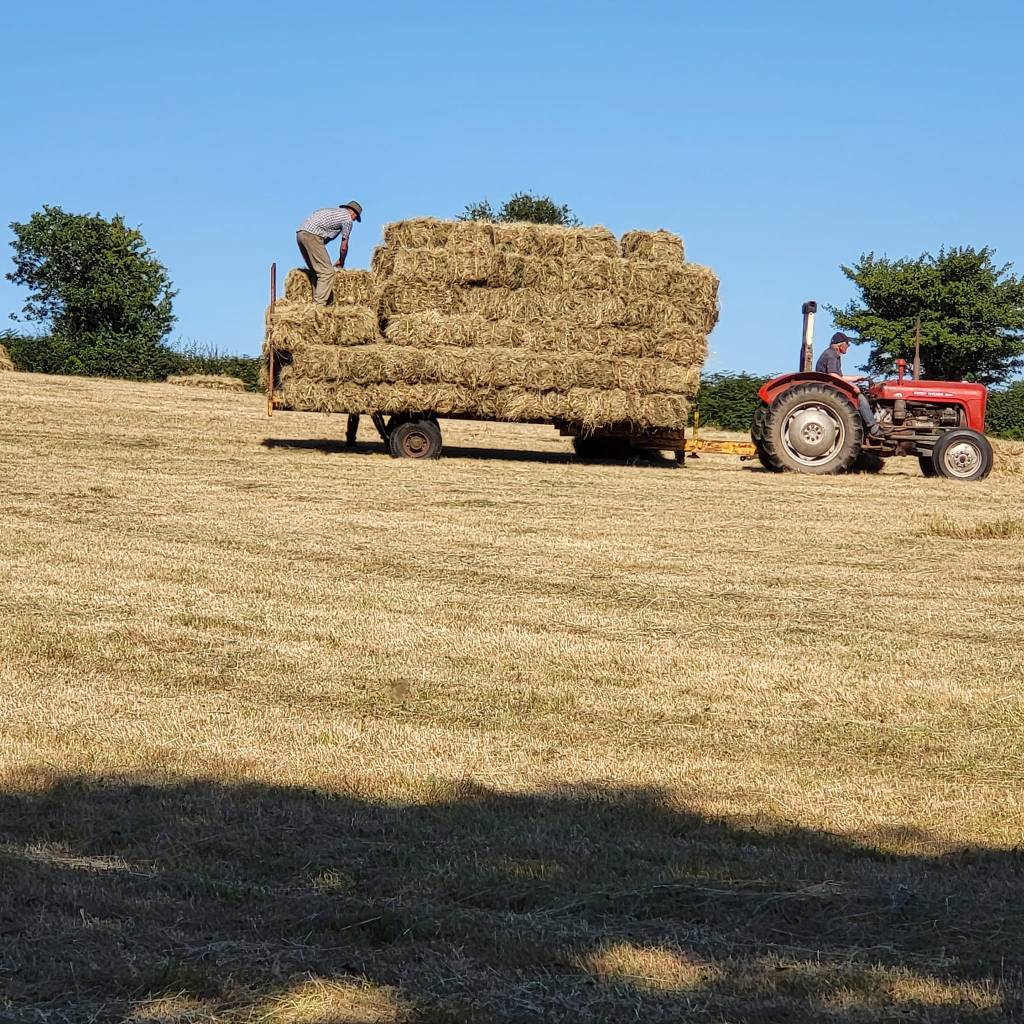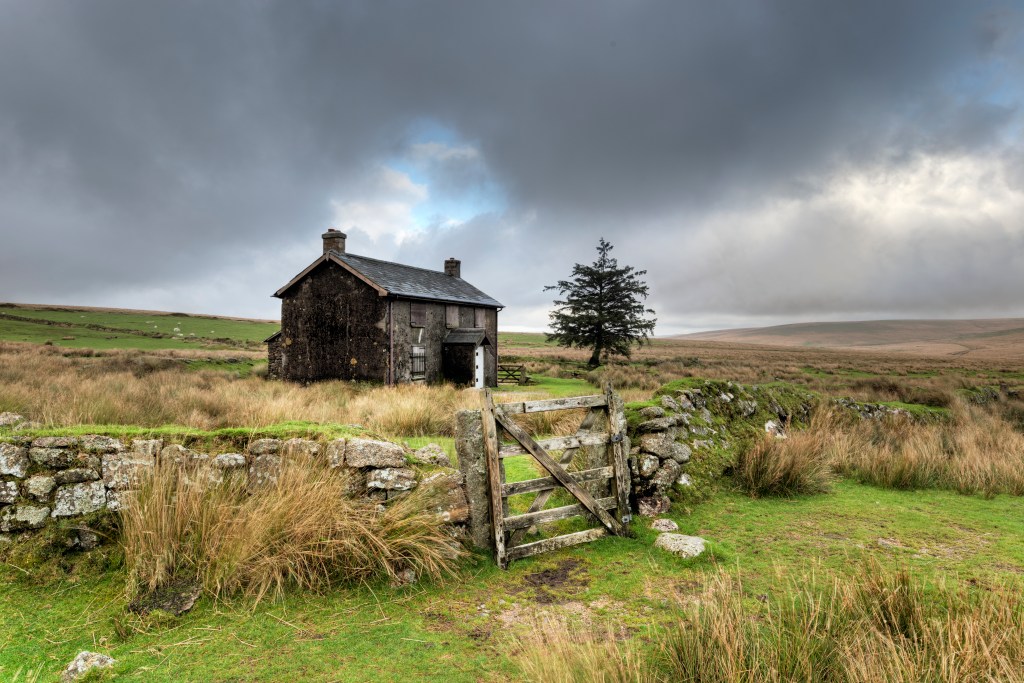It is my great pleasure to once again welcome historical novelist Helen Hollick to my blog! Helen has explored different eras in her writing: Arthurian times, Anglo Saxon times, the Golden Age of Piracy and now the more recent 1970’s with her cozy mystery series featuring the intrepid mystery solving librarian, Jan Christopher. The fourth book in the series just came out and Helen is here to talk about A Meadow Murder and share an excerpt. It’s a great story, and I love being swept away to rural Devon (even with murder). You’ll not want to miss this one!
Make hay while the sun shines? By Helen Hollick
Summer 1972. Young library assistant Jan Christopher and her fiancé, DS Lawrence Walker, are on holiday in North Devon. There are country walks and a day at the races to enjoy, along with Sunday lunch at the village pub, and the hay to help bring in for the neighbouringfarmer.But when a body is found the holiday plans are to change into an investigation of murder, hampered by a resting actor, a woman convinced she’s met a leprechaun and a scarecrow on walkabout…
A Meadow Murder is the fourth tale in the Jan Christopher cosy murder mystery series, the first three being A Mirror Murder, A Mystery of Murder and A Mistake of Murder… see what I’ve done there? Yes, I’ve created a proper puzzle for myself because now every tale in the series will have to follow the same title pattern of ‘A M-something- of Murder’ (Suggestions welcome!)
I have based the series on my years of working as a library assistant during the 1970s, the mysteries alternate between the location of Chingford, north-east London, where the real library I worked in used to be, (the building is still there, but is, alas, now offices,) and my own North Devon village, but ‘Chappletawton’ is a fictional version, larger than my rural community and has far more quirky characters!
The main characters in the series, however, remain the same: Jan Christopher is the niece, and ward, of Detective Chief Inspector Toby Christopher and his wife, her Aunt Madge. In A Mirror Murder, Jan (short for January, a name she hates) meets her uncle’s new driver, Detective Constable Lawrence Walker. Naturally, it is love at first sight… but will an investigation into a murder affect their budding romance?
We find out as the series continues: Episode Two takes the young couple to spend Christmas at Laurie’s parents’ old farmhouse in Devon, while Episode Three sees us back at work at Chingford library. We again travel to Devon for the summer of 1972 in Episode Four – A Meadow Murder. And no spoilers, but the title is a little bit of a giveaway!
I had the idea for A Meadow Murder during the summer of 2022, while watching our top field being cut for hay. The cover photograph is the actual field – a real Devonshire hay meadow, and the scenes in the story are based on my everyday life… even down to the deer, the bunnies and the red Massey Ferguson tractor.




“As delicious as a Devon Cream Tea!” author Elizabeth St John
“Every sentence pulls you back into the early 1970s… The Darling Buds of May, only not Kent, but Devon. The countryside itself is a character and Hollick imbues it with plenty of emotion” author Alison Morton
An Excerpt from A Meadow Murder
From the gate, we could see the entire half-circle of ‘our’ bit of the Taw Valley: on the far side, the verdant, rounded hills sloped upward in an almost mirror image of our side of the ‘V’, except, over there a few more farms and houses were dotted about, their white cob walls gleaming in the afternoon sunshine. Devon is primarily an agricultural county, with a large proportion of wildlife found on the farmland and the moors – Exmoor, Dartmoor and Bodmin Moor. The valleys and rolling hills make the county less suitable for the intensive agriculture which made huge changes to the English landscape in the 1940s and ’50s. Here, sheep and cattle graze in the grassy, green fields patchworked, here and there, by yellow meadows of sunbaked grass that looked ready to be cut and baled as hay.
“Ralph Greenslade, from Lower Valley View Farm, will cut soon,” Laurie said, as if he had read my thoughts. “Possibly tomorrow, then it’ll be all hands on deck in a couple of days to help bring the bales in, especially if the weather starts to look unsettled.”
I looked up at the almost cloudless blue sky. “Is it likely to change?” I asked, sceptically.
“It can change overnight down here in the West Country,” Laurie said. “It’s not likely just yet, but in a couple of days we could be threatened with thunderstorms – although this valley, for some reason, seems to escape the worst of it. The air currents, I suppose. They tend to go round the side of us. Barnstaple and South Molton get the downpours with the accompaniment of thunder and lightning more than we do.”
I was relieved to hear it; I wasn’t too keen on thunderstorms.
Two buzzards were circling, high, high up, plaintively mewing to each other.
“You can tell the weather by the buzzards,” Laurie said, also watching them.
“Oh? How?”
He grinned. “If you see a buzzard, it isn’t raining.”
“Oh, very funny.” I aimed a reprimanding light kick at his ankle.
“No, seriously; they don’t like the rain. But aren’t they magnificent? I like to think they’re calling to each other for no other reason than to express their joy at being up there, gliding above this wonderful landscape.”
“Or they could be saying, ‘Look at those two humans leaning on the gate down there. How sad that they can’t fly’.”
Laurie grinned and took my hand in his then we set off for the next part of the lane which dipped down a short way, then trudged upward again before joining Mallard Lane, a steady gradient of about half a mile to the ridge and the village of Chappletawton.
“But why do we need to help with the hay?” I asked, knowing how heavy bales of hay were, wondering why hay making would involve us, and, if it did, how much trudging up and down hill would be required. None of which would be my idea of a relaxing holiday.
“We’re not obliged to help at all,” Laurie explained, “but we have a laugh working together, and Top Meadow actually belongs to Dad. But we like to join in when we can. Those fields running alongside the lane we’ve just walked up are ours too, but Dad lets Ralph use them. One day – one distant day I might add – when Valley View Farm becomes mine and I’ve retired from the police, I’ll keep sheep and cattle and make the hay for myself.” He grinned, and knowing I was a ‘horse’ person, added, “and keep a pony or two.”
We walked on.
“Where is the baled hay kept?” I asked tentatively, uneasily thinking of the steep hills again.
“From our field? It’s stored in the big barn opposite the house, the one next to our garage.”
“And do we have to walk up and down with bales of hay?” OK, that sounded as lame a question as it actually was.
Laurie laughed. “No, silly, it’s stacked onto a large trailer. Play your cards right, you’ll get to ride the trailer down the hill. It’s great fun. Very clattery and swayey coming back up with the trailer empty; you cling onto the bars for dear life. Great fun.”
I reserved judgement on that.
Talk of the devil, as the saying goes, in Mallard Lane we met a tractor trundling towards us, driven by Ralph himself.
“Af’noon young Laurie, Miss Christopher. Fine day!”
I noted that, as with most Devonshire people who spoke with the local accent, Mr Greenslade pronounced an ‘f’ as a ‘v’ sound. So ‘vine’ day. Laurie often slipped into the dialect as well, despite living in a London suburb for quite a while now.
“It certainly is, Mr Greenslade. I was just telling Jan about cutting the hay in our meadow.”
“Oh, arr, be cuttin’ ’er s’af’noon I reckon. Get ’er all in afore the rain blows up.”
“We’ll be there to help,” Laurie answered. “When do you think it’ll be?”
“Mond’y, I ’spec. Give ’er time to dry nice. Got ’t be proper dry, else it could combust a’cause o’ the heat damp hay generates.”
“Monday it is then,” Laurie said, giving a half salute.
We squeezed into a gap in the hedged bank and Laurie admired the rattling and huffing, bright red Massey-Ferguson tractor as it crawled past us.
“I’ve always liked tractors,” he said. “During the summer holidays, from when I was about ten years old, Ralph used to let me drive his old one round the fields. Great way to learn to drive.”
“That was good of him,” I answered, but added sceptically, “isn’t ten a bit young?”
“Yes, he’s a good chap. Most farming kids learn to drive the tractors at an early age. It’s part of country life.”
“Is it hard work, helping with the hay?”
“Not as hard as it used to be for people in the past when everything was done by hand. Now it is hard, but good exercise. Think how trim your figure will get!” he teased, then seeing me scowl at the reference to my puppy-fat waistline gave me a reassuring kiss. “But I love you just as you are.”
I grinned at him. “When you’re in a hole, DS Walker, stop digging.”
READ ON IN A Meadow Murder, and immerse yourself in country life during the summer of 1972 … and maybe solve a murder along the way?
A Meadow Murder is available in Paperback or e-Book, including Kindle Unlimited. Also available worldwide, or order from any reliable bookstore.
Download your copy today from Amazon
Explore all of Helen’s books on Amazon – Helen Hollick.
ABOUT THE AUTHOR: HELEN HOLLICK
First accepted for traditional publication in 1993, Helen became a USA Today Bestseller with her historical novel, The Forever Queen (titled A Hollow Crown in the UK) with the sequel, Harold the King (US: I Am The Chosen King) being novels that explore the events that led to the Battle of Hastings in 1066. Her Pendragon’s Banner Trilogy is a fifth-century version of the Arthurian legend, and she writes a nautical adventure/supernatural series, The Sea Witch Voyages. She has also branched out into the quick read novella, ‘Cosy Mystery’ genre with her Jan Christopher Murder Mysteries, set in the 1970s, with the first in the series, A Mirror Murder incorporating her, often hilarious, memories of working as a library assistant.
Her non-fiction books are Pirates: Truth and Talesand Life of A Smuggler.
She lives with her husband and daughter in an eighteenth-century farmhouse in North Devon, enjoys hosting author guests on her own blog ‘Let Us Talk Of Many Things’ and occasionally gets time to write…
For more information about Helen’s work, visit her WEBSITE, MAIN BLOG or subscribe to her NEWSLETTER. Connect with Helen through Facebook and Twitter @HelenHollick.




Thank you so much Cryssa!
LikeLiked by 1 person
thank you very much for joining us today!
LikeLike